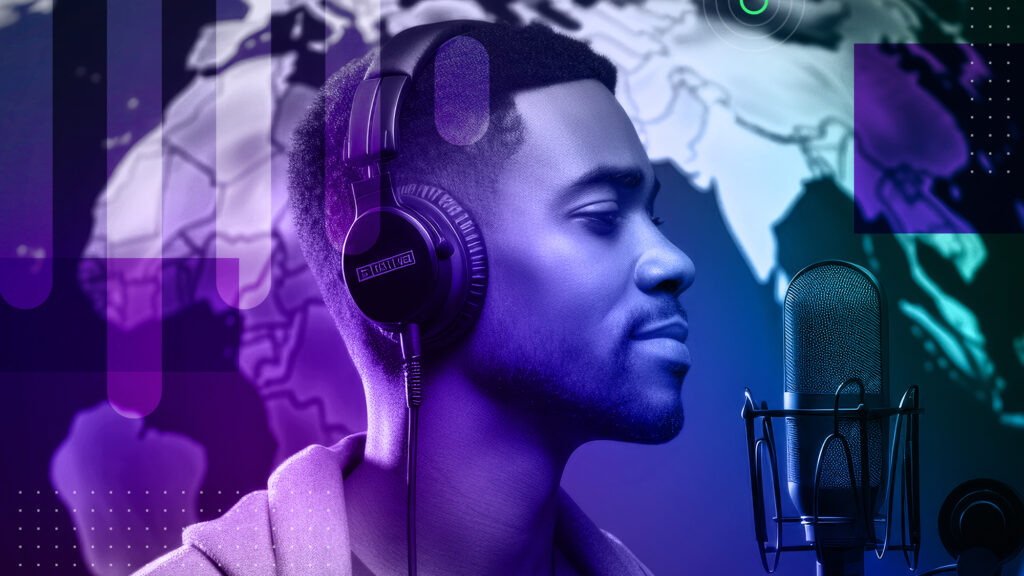Audio by Donna W. using WellSaid Labs
Imagine a world where you could perfectly replicate your voice, down to the slightest inflection or pausing patterns. No, this isn’t a new sci-fi flick. It’s today’s reality with custom voice technology.
While the headlines may occasionally fill with cautionary tales about voice cloning scams, the truth is, custom voice isn’t the big, bad wolf everyone thinks it is. Implemented correctly, it might just be the hero in your next business or personal venture.
💡Discover how a custom voice is made.
If you’re still familiarizing yourself with Text-to-Speech (TTS) and custom voice, hang onto your hats. We’re about to demystify what custom voice is, its potential benefits, its fascinating uses, and, yes, the challenges that come with it. But fear not, this isn’t going to be a grim tale from an Orwellian future.
💡Learn more about WellSaid’s custom voice here.
What is a custom voice and why would I want one?
While it goes by many names—voice cloning, custom TTS–they all translate to the same concept. Custom voice involves creating a digital replica of a person’s unique voice. It captures nuances like speech patterns, accents, inflections, and even the rhythm of one’s breathing. This voice doppelganger is crafted by training algorithms using samples of a person’s speech.
It’s essential, though, to approach a custom voice with the right expectations. Creating a quality digital voice isn’t an instantaneous or cheap affair. If it seems too quick and affordable, you’re probably getting a fun robot-like version of your voice. Good for play, not so much for professional purposes.
Now, why might someone crave such a voice twin? Three primary reasons rise to the top:
Flexibility: AI voices are wonderfully malleable. Once you’ve defined the voice character, recording is a breeze. Your first take? Likely your final one. Plus, tailoring the voice to suit various tones and styles becomes a walk in the park.
Cost-efficiency: Say goodbye to lengthy voice-over sessions. AI voices are generated in mere moments, and edits are swift and painless. The time and cost savings, both pre and post-production, are significant.
Inclusivity: Offering your project in different languages or dialects? No problem. You don’t have to swap voices, keeping consistency across the board.
A consistent brand sound
Enter the era of sonic branding—a trend 40% of businesses are already riding. This doesn’t just mean having a catchy jingle but having a consistent voice across all platforms. With a custom voice, you have something wholly unique. This means your brand message remains consistent, using the same literal and figurative voice for ads, videos, and more.
💡Discover more about the sonic branding trend.
Not to mention, depending on a specific voice actor can be dicey. Their future actions or stances might not align with your brand’s vision. However, by fashioning a distinct voice, brands nurture trust with their audience through consistent tone and voice, without fearing unforeseen changes. With a striking stat indicating that brand consistency can elevate revenue by a whopping 20%, it’s high time to get ahead of the game!
💡Find out more about voice AI and marketing.
Making it personal
Companies like WellSaid Labs provide APIs, allowing businesses to seamlessly integrate their unique voices into products. This opens doors to a plethora of personalized audio content across platforms. Consider the appeal of personalization: 69% of consumers cherish it, provided the data’s sourced ethically.
For budding authors, spending hours narrating an audiobook becomes obsolete. On the customer service front, the applications have evolved way past the cliched automated voice responses. Synthetic voice-powered customer service tools on websites, kiosks, or apps are changing the game. The potential? Limitless.
Level up learning experiences
Beyond the corporate sphere, custom voices have a burgeoning role in education. Picture teachers reaching students worldwide, using synthetic versions of their voice to communicate in numerous languages. Or, imagine students with speech challenges actively participating in discussions.
And it’s not just for academic institutions. Corporate training modules, powered by synthetic voices, can be engaging and effective. Given that audio content significantly boosts comprehension—with hearing accounting for 60-75% of learning comprehension compared to visual cues at 25-40%—it’s clear that custom voice is a tool with enormous potential in the education sector.
Tackling the big bad risks
However, with great power comes great responsibility. Voice actors are rightly concerned about unauthorized use of their audio personas. Legal frameworks must safeguard voice ownership, ensuring actors are appropriately compensated.
The rise of deepfaking scams, using voice cloning, is undeniable. With figures like celebrities and politicians becoming easily mimicable, there’s a growing risk of fake news and controversies. Therefore, it’s imperative to choose an ethical AI partner and avoid software that doesn’t prioritize responsible AI practices.
💡Get educated on WellSaid’s ethical AI practices.
Wrapping up on custom voice
Looping back to where we began, custom voice technology, when used responsibly, can be hugely valuable. From branding to education, the possibilities are endless. Yet still, it underscores the need for responsible AI on a broader scale.
Keen to craft your unique voice? Let’s create something remarkable! Reach out today and we’ll get you started.
As we part ways on this sonic journey, remember: In the age of customization, your voice can be as unique as your fingerprint. Just ensure it speaks responsibly. 🗣️




